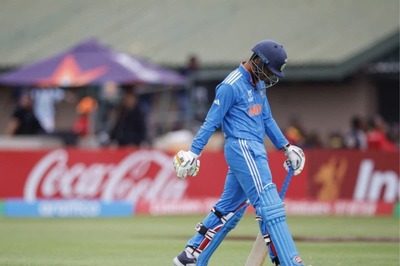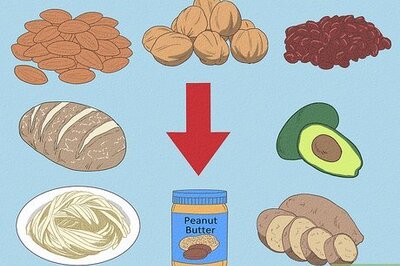
views
The West Bengal State Election Commission had announced rural body polls on June 8. According to media reports, at least 52 people were killed in poll-related violence in the next 37 days. However, the official numbers are less than half.
For West Bengal, election means widespread violence. And since elections happen almost every year, people keep dying in the hundreds. Opposition party activists and sympathisers remain homeless. Their state government doesn’t set up any relief camp, but neighbouring states do. Many were given shelter by Assam this year as well as in 2021.
The saddest part of the whole story is, no one — including media and civic society — keeps count of them. Over 50 cases of violence were registered by the Central Bureau of Investigation (CBI) alone after the 2021 assembly election. In 2020, union home minister Amit Shah said 300 BJP activists had died in Bengal.
One may accuse the BJP of exaggeration. But then the official numbers are too small. Nearly seven or eight people died in this poll season in Bengal while making bombs. It’s up to the government to classify deaths. The normalisation of violence is a part of the culture here. While refuting Shah’s 2020 claim on violence, the ruling Trinamool Congress (TMC) bigwig and top minister late Subrata Mukherjee had said: “Many BJP workers were killed because of infighting. Even death by suicide was being passed off as political killings.” He further added, “Since 1998, at least 1,027 TMC workers have been killed in political rivalry.”
During the 34-year CPI(M)-led Left Front rule, the government used to shrug off allegations of violence in a similar manner. Questions about the absence of opposition candidates in local body elections or absence of opposition polling agents in booths or abnormally low votes (often in single digits) in many booths were sneered at. The CPI(M) never admitted atrocities against opposition supporters and activists. But everyone knew the truth. Just as everyone now knows why Trilochan Mahato and some more BJP activists decided to commit “suicide” — as it was officially reported — by hanging from electricity poles or trees after the panchayat election in 2018. Post-poll violence is West Bengal’s contribution to the dictionary.
All violence cannot be reported. They are felt. Roughly 10 percent of seats in the latest round of rural body elections went uncontested. The ruling party won before the poll was over. In 2018, one-third of the seats went uncontested. The TMC won a whole district uncontested. Here in West Bengal, we call it “improvement”.
In this world, violence begets violence. The CPI(M) government was overthrown in 2011 in an anarchic situation. Maoist and minority religious-political consolidations fired the first salvo. Administration disappeared from Jungle Mahal and Nandigram, where the CPI(M) once enforced a near single-party rule. Armed militias mercilessly killed and chased away ruling party activists. People across Bengal sensed a change. The wave had subsequently hit Singur, closer to Kolkata. Banerjee’s TMC rode the wave. The state saw complete lawlessness for nearly four years since 2007.
Jump cut to 2023 panchayat polls. Two minority-dominated districts — South 24 Parganas and Murshidabad — contributed half of the death toll in the state. The TMC is the uncrowned king in both districts, it won 53 of the 55 assembly seats in 2021. However, during the panchayat election, a counter-minority-political consolidation aligned to the CPI(M) fought the TMC bomb-by-bomb in South 24 Parganas. A July 15 ground report by The Hindu points to complete lawlessness in Murshidabad, where people are killing people at the slightest provocation.
The mayhem can be explained in more ways than one. First, faults emerged in the TMC’s core minority support base. That explains why it is crucial for the party to strike an alliance with the CPI(M) and Congress in the 2024 Lok Sabha elections. But, more importantly, in a repeat of what happened to the CPI(M) after the landslide win in 2006, the TMC was countered in a violent language, right in its stronghold. What would the TMC do now? One can look at the history.
Violence had been a part and parcel of West Bengal politics for long. During 1972-77, the Congress unleashed violence on the Leftists. After the change in power in 1977, the Left initially resorted to economic deprivation of the opponent supporters, which slowly but surely took a deadlier turn.
As the popular support waned and the CPI(M) faced resistance in Mamata Banerjee (first in the Congress, then Trinamool) beginning early 1990s, the nature of violence became ghastlier. People were either charred to death (Chhoto Angaria) or slaughtered (Nanoor) in dozens. In places, they were engaged in a fierce gunfight for area control (Keshpur). The conscience of the nation remained in a coma because the CPI(M) was playing a key role in national coalition politics.
Mamata Banerjee is not as blessed. Neither has she the number nor does she have any presence at the Centre. She is pressing for its return though. Her political journey may not be that easy in future.
(Pratim Ranjan Bose is an independent columnist. Views expressed in the above piece are personal and solely that of the author. They do not necessarily reflect News18’s views)

















Comments
0 comment